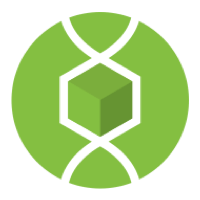The Potential of Natural History Collections in Educating the 21st Century Scientist and Citizen
Author(s): Anna Monfils1, Molly Phillips2, Debra Linton1
1. Central Michigan University 2. iDigBio, Florida Museum of Natural History, University of Florida
1264 total view(s), 71 download(s)
Description
Abstract: Natural History collections and the mobilization of specimen-based data has opened new opportunities for education. This presentation will introduce challenges and emerging opportunities for integrating specimen-based data and natural history collections into the k-12 and undergraduate curricula.
Description: Rapid advances in data research and technology are transforming how science is conducted. The volume and variety of data being generated, the increased accessibility of data for aggregation, the improved discoverability of data, and the increasingly collaborative and interdisciplinary nature of scientific research are driving the need for new skill sets to address scientific issues of critical national and global importance. The biodiversity sciences have experienced a rapid mobilization of data that has increased capacity to investigate large-scale issues of critical importance (e.g., climate change, zoonotic disease, resource management, invasive species, and biodiversity loss). To prepare a data literate workforce that can harness the potential of biodiversity data, we need tools and strategies to engage students and help students to acquire data literacy skills. Data based on biological and paleontological specimens have unique properties that facilitate student engagement and can be used in authentic, iterative interdisciplinary investigations of complex and changing systems. In this presentation we will discuss the unique and engaging data emerging from natural history collections and how these data can be used to teach emerging data literacy competencies and core content and skills referenced in the Next Generation Science Standards and AAAS Vision and Change document. We will detail how the Biodiversity Literacy and Undergraduate Education: BLUE Data Network, iDigBio, QUBES, and ESA are working together to create resources, develop and disseminate curricular materials, and facilitate on-going opportunities to integrate collections-based data in the classroom.
Cite this work
Researchers should cite this work as follows:
- Monfils, A., Phillips, M., Linton, D. (2019). The Potential of Natural History Collections in Educating the 21st Century Scientist and Citizen. QUBES Leadership Team, QUBES Educational Resources. doi:10.25334/Q44433
